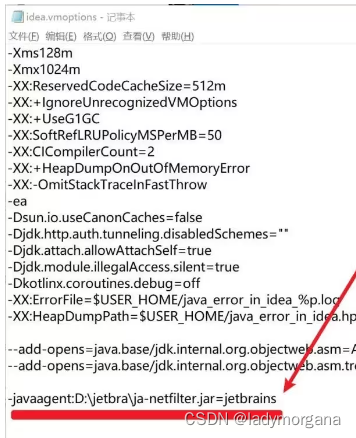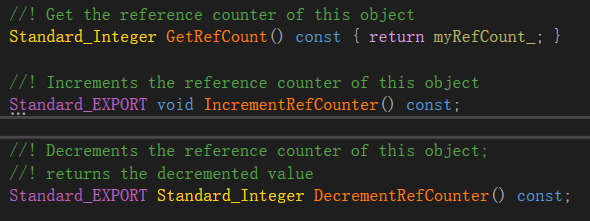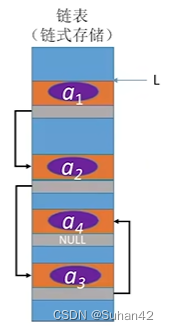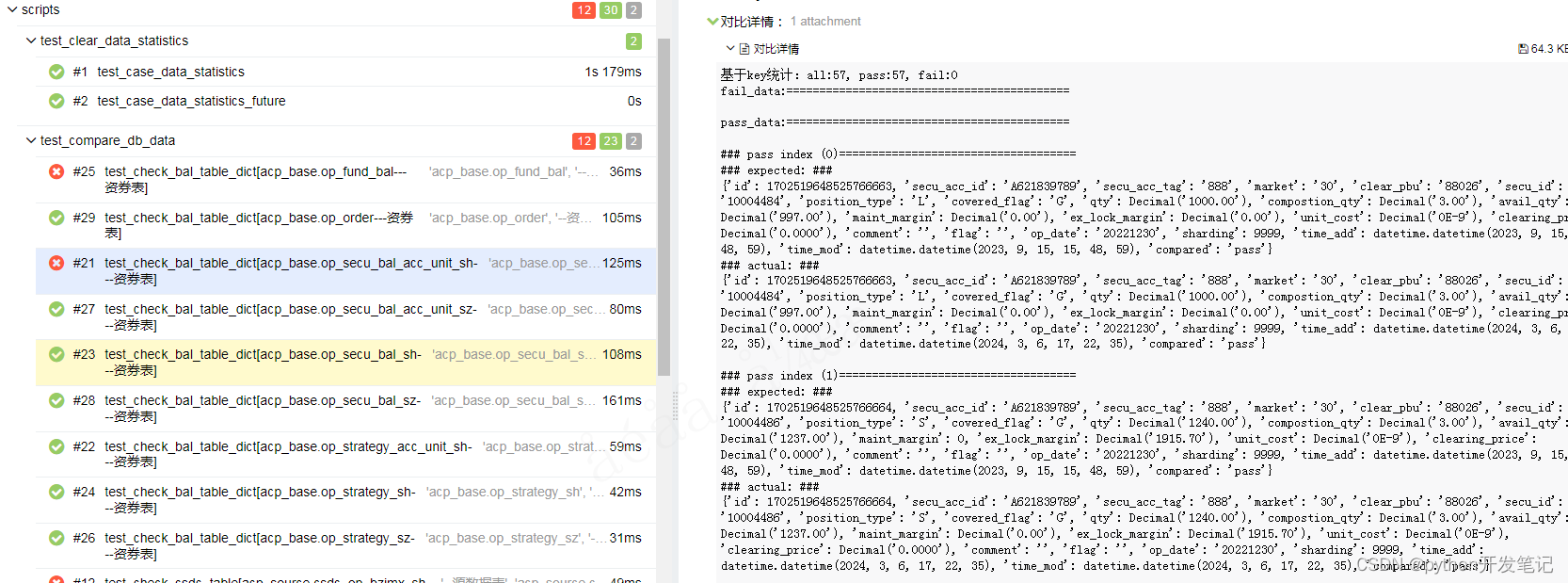和神经网络介绍相比,本文更侧重于程序实现
理解Keras中的组件
Keras是一个高级的神经网络API,用Python实现的,并且可以运行在TensorFlow、CNTK或Theano等后台之上。
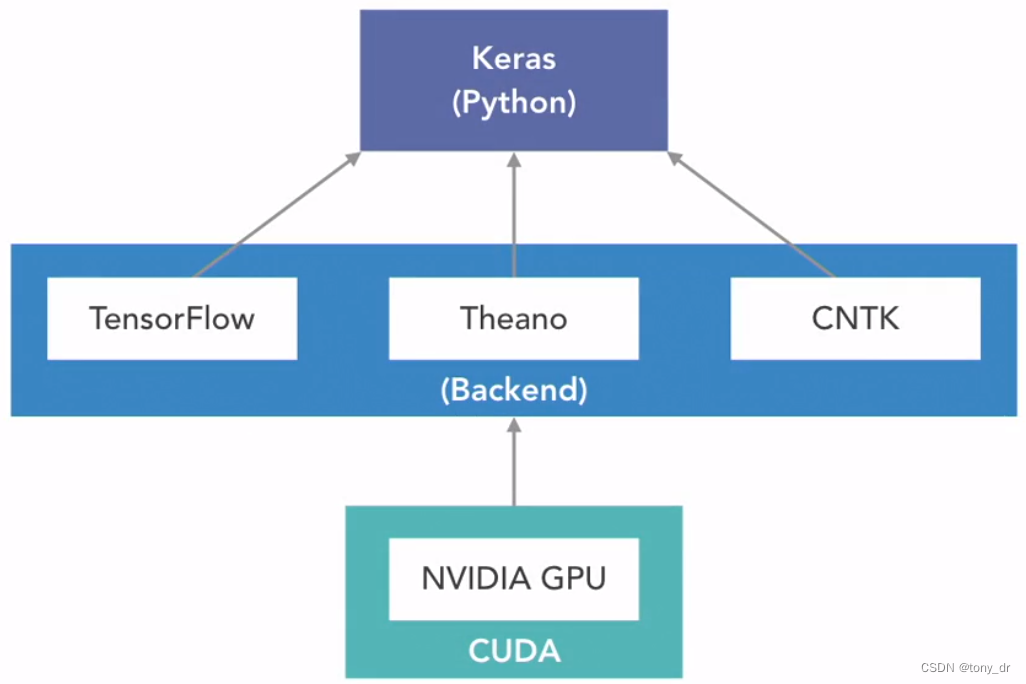
model.compile()
compile(self, optimizer, loss, metrics=None, ...)- 该函数用于配置模型的学习过程
- 接收3个参数
- optimizer: 是对损失函数(Loss function)求最小值的算法,包含一系列参数。
- 可以在compile()调用时直接指定算法的名称,比如"SGD", "adam","rmsprop"等
- 也可以在compile之前先实例化,然后再将这个实例传给compile()
- loss: 用于测量神经网络误差的准确度的目标函数,即损失函数,会在训练过程用于调整参数
- metrics: 用于模型评价。metrics和loss在含义上的区别可以参考这篇博文:loss与metric的区别 以及 optimizer的介绍_metric loss-CSDN博客
- optimizer: 是对损失函数(Loss function)求最小值的算法,包含一系列参数。
常用的optimizer
- SGD: Stochastic Gradient Descent,随机梯度下降法。支持动量(momentum),学习率衰减(learning rate decay)等超参数
- RMSprop:常用于循环神经网络
- Adam:Adaptive Moment Estimation,自适应矩估计。是一种基于一阶梯度的随机目标函数优化算法
常用的loss
- mean_squared_error:均方差。用于回归问题
- categorical_crossentropy: 分类交叉熵。计算预测和目标值之间的分类交叉熵,常用于目标有多个分类的问题。
- binary_crossentropy: 二元交叉熵。计算预测和目标值之间的二元交叉熵,常用于目标有2个分类的问题。
以上参数详细信息均可以查看Keras手册: Optimizers, Losses, Metrics
使用Keras实现一个神经网络
下面给出一个神经网络的程序案例。该案例使用了经典的MNIST数据集。该数据集是一个用于识别手写数字的数据集,即根据手写的数字样式(图片),识别0~9共10个数字。该问题是一个多分类问题。该数据集的官网:http://yann.lecun.com/exdb/mnist/。以下程序依然是使用google Colaboratory的开发环境。
1. 导入Python的包
from keras.datasets import mnist
from keras.preprocessing.image import load_img, array_to_img
from keras.utils import to_categorical
from keras.models import Sequential
from keras.layers import Dense
import numpy as np
import matplotlib.pyplot as plt
# Allow view plots in the notebook, '%' is a magic usage for python for special
%matplotlib inline 2. 加载数据
导入Keras的mnist数据集后,直接调用其load_data()方法
(X_train_raw, y_train_raw), (X_test_raw, y_test_raw) = mnist.load_data()
print(X_train_raw.shape, X_test_raw.shape)
print(y_train_raw.shape, y_test_raw.shape)输出如下:
(60000, 28, 28) (10000, 28, 28)
(60000,) (10000,)可以看到训练集中有60000组数据,每组数据包含28x28=784个像素点,即每个采样有784的维度,按照神经网络的通俗理解,有784个特性。之所以强调这个理解,是因为在随后的主题中,将讨论到卷积神经网络,在那个主题里,我们将讨论到图像识别问题中的高维问题。而本文中的问题,虽然也是一个图像识别问题,但由于像素点不是特别多,所以采用的方法还是传统的神经网络模型,即全连接的前馈神经网络。
测试集中有10000组数据。而标签y的每组数据只有一个数值,即0~9。
3. 理解图像数据
print(X_train_raw[0].shape)
plt.imshow(X_train_raw[0], cmap='gray')
print(y_train_raw[0])输出如下:
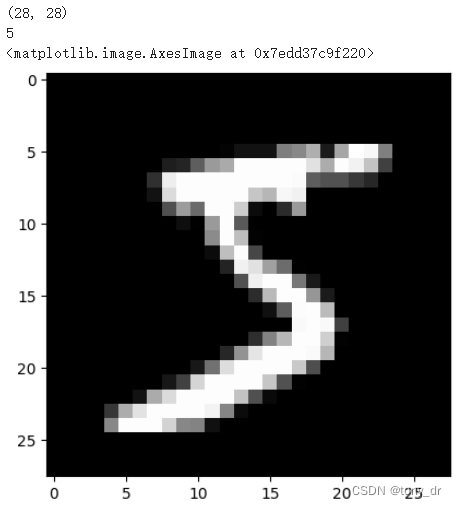
可以看到,这个数字是5,图片显示了这个5的手写样式。
4. 预处理训练数据
对于图像数据,其每组数据(像素点)均为MxN的矩阵形式(不考虑色彩),而通常的神经网络,每层处理的实际上一个向量数据,而非矩阵形式,因此需要将MxN的矩阵转化为一个1xMN的向量。下面程序中的reshape()函数实现了这个功能,这也是一般图像数据需要进行的预处理。
每组数据的每个像素点的值是0~255(表示由黑渐变到白的每一种颜色),为了消除数值本身的影响,采用了对每个数值除以255的定标操作。
image_height, image_width = 28, 28
X_train = X_train_raw.reshape(60000, image_height*image_width)
X_test = X_test_raw.reshape(10000, image_height*image_width)
print(X_train.shape, X_test.shape)
# data value is scaled, which is divided by 255 (each pixel value is 0~255)
X_train = X_train.astype('float32') / 255.0
X_test = X_test.astype('float32') / 255.0
print(X_train[0])reshape之后,X_train和X_test的shape输出如下:
(60000, 784) (10000, 784)5. 预处理测试数据
对于二分类问题,标签一般为0,1;而对于多分类问题,我们会将标签扩张为一个由若干0和1组成的向量。
在这个问题中,总共有10个数字,我们构造一个1x10的向量,表示每一个数字。例如数字5可以表示为[0,0,0,0,0,1,0,0,0,0]。函数to_categorical()实现了该功能
# convert each class value to a vector with value of 0 or 1
# i.e. if class vector, then it will be a matrix with value of 0 or 1
# e.g. for 0~9, 10 classes in total, if value is 5, then it will be
# coverted to [0,0,0,0,0,1,0,0,0,0]
y_train = to_categorical(y_train_raw, 10)
y_test = to_categorical(y_test_raw, 10)
print(y_train.shape)
print(y_train[0])输出如下:
(60000, 10)
[0. 0. 0. 0. 0. 1. 0. 0. 0. 0.]6. 构建Keras模型
Keras使用Sequential()构造一个空模型,然后用add()添加每一个层。Dense()用于产生一个全连接层。其中在第一层需要指明input_shape()。input_shape中的数字由每组数据包含的数值个数决定(本例中是28x28=784)。
model = Sequential()
# 'Dense' means it's a full-connected layer
# For the 1st layer, the shape must be given, input_shape=(784,) means the
# the input is a matrix with N * 784 (X_train.shape is (60000, 784))
model.add(Dense(512, activation='relu', input_shape=(784,)))
# For the following layers, the shape is not necessary
model.add(Dense(512, activation='relu'))
# output layer, 'softmax' is used
model.add(Dense(10, activation='softmax'))7. 编译训练模型
# As it is a multi-classfication problem, loss is chosen as categorical_crossentropy
model.compile(optimizer='adam',
loss='categorical_crossentropy',
metrics=['accuracy'])
# show summary to make sure it's what we expected
model.summary()summary()输出如下
Model: "sequential"
_________________________________________________________________
Layer (type) Output Shape Param #
=================================================================
dense (Dense) (None, 512) 401920
dense_1 (Dense) (None, 512) 262656
dense_2 (Dense) (None, 10) 5130
=================================================================
Total params: 669706 (2.55 MB)
Trainable params: 669706 (2.55 MB)
Non-trainable params: 0 (0.00 Byte)
_________________________________________________________________每一层的参数是指计算这一层用到的权重和偏好的个数。对于全连接模型
- 权重个数 = (上一层结点数) x (当前层结点数)
- 偏好个数 = 当前层结点数
于是:
- layer1 = 784 x 512 + 512
- layer2 = 512 x 512 + 512
- layer3 = 512 + 10 + 10
8. 训练模型
Keras使用fit()训练模型(其它很多AI的模型库也使用这个函数名)。返回的history会记录每个epoch的计算结果。
history = model.fit(X_train, y_train, epochs=20, validation_data=(X_test, y_test))运行fit()后,结果如下:
Epoch 1/20
1875/1875 [==============================] - 25s 12ms/step - loss: 0.1821 - accuracy: 0.9446 - val_loss: 0.1131 - val_accuracy: 0.9642
Epoch 2/20
1875/1875 [==============================] - 24s 13ms/step - loss: 0.0796 - accuracy: 0.9753 - val_loss: 0.0731 - val_accuracy: 0.9768
Epoch 3/20
1875/1875 [==============================] - 30s 16ms/step - loss: 0.0558 - accuracy: 0.9826 - val_loss: 0.0712 - val_accuracy: 0.9774
Epoch 4/20
1875/1875 [==============================] - 35s 19ms/step - loss: 0.0419 - accuracy: 0.9871 - val_loss: 0.0793 - val_accuracy: 0.9755
Epoch 5/20
1875/1875 [==============================] - 30s 16ms/step - loss: 0.0353 - accuracy: 0.9886 - val_loss: 0.0808 - val_accuracy: 0.9773
Epoch 6/20
1875/1875 [==============================] - 23s 12ms/step - loss: 0.0281 - accuracy: 0.9906 - val_loss: 0.0690 - val_accuracy: 0.9831
Epoch 7/20
1875/1875 [==============================] - 24s 13ms/step - loss: 0.0234 - accuracy: 0.9926 - val_loss: 0.1078 - val_accuracy: 0.9769
Epoch 8/20
1875/1875 [==============================] - 24s 13ms/step - loss: 0.0218 - accuracy: 0.9929 - val_loss: 0.0940 - val_accuracy: 0.9790
Epoch 9/20
1875/1875 [==============================] - 23s 12ms/step - loss: 0.0212 - accuracy: 0.9937 - val_loss: 0.1177 - val_accuracy: 0.9777
Epoch 10/20
1875/1875 [==============================] - 23s 12ms/step - loss: 0.0193 - accuracy: 0.9943 - val_loss: 0.1055 - val_accuracy: 0.9802
Epoch 11/20
1875/1875 [==============================] - 22s 12ms/step - loss: 0.0186 - accuracy: 0.9941 - val_loss: 0.0923 - val_accuracy: 0.9824
Epoch 12/20
1875/1875 [==============================] - 26s 14ms/step - loss: 0.0126 - accuracy: 0.9961 - val_loss: 0.1040 - val_accuracy: 0.9829
Epoch 13/20
1875/1875 [==============================] - 25s 13ms/step - loss: 0.0162 - accuracy: 0.9958 - val_loss: 0.1177 - val_accuracy: 0.9792
Epoch 14/20
1875/1875 [==============================] - 28s 15ms/step - loss: 0.0156 - accuracy: 0.9958 - val_loss: 0.1153 - val_accuracy: 0.9813
Epoch 15/20
1875/1875 [==============================] - 23s 12ms/step - loss: 0.0159 - accuracy: 0.9959 - val_loss: 0.0955 - val_accuracy: 0.9833
Epoch 16/20
1875/1875 [==============================] - 23s 12ms/step - loss: 0.0128 - accuracy: 0.9964 - val_loss: 0.1216 - val_accuracy: 0.9827
Epoch 17/20
1875/1875 [==============================] - 23s 12ms/step - loss: 0.0147 - accuracy: 0.9962 - val_loss: 0.1250 - val_accuracy: 0.9807
Epoch 18/20
1875/1875 [==============================] - 22s 12ms/step - loss: 0.0096 - accuracy: 0.9975 - val_loss: 0.1409 - val_accuracy: 0.9791
Epoch 19/20
1875/1875 [==============================] - 23s 12ms/step - loss: 0.0177 - accuracy: 0.9961 - val_loss: 0.1395 - val_accuracy: 0.9789
Epoch 20/20
1875/1875 [==============================] - 23s 12ms/step - loss: 0.0122 - accuracy: 0.9967 - val_loss: 0.1324 - val_accuracy: 0.9829注意到每一行表示一个epoch的输出,这一行中记录了’loss‘, 'accuracy', 'val_loss', 'val_accuracy' 4个参数,这些信息都会保存到history中。这一行同时也记录了每个epoch运行的时间,20~30秒。
9. 浏览训练模型的准确度
查看history(fit函数的返回值)中的记录,检查模型训练的准确度
例如,查看'accuracy'
plt.plot(history.history['accuracy'])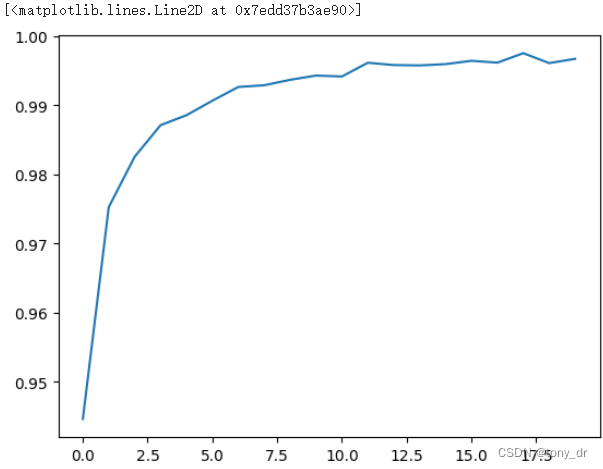
10. 评价模型
使用evaluate()函数执行模型评价
score = model.evaluate(X_test, y_test)
print(score)输出如下
313/313 [==============================] - 1s 4ms/step - loss: 0.1324 - accuracy: 0.9829
[0.13238213956356049, 0.9829000234603882]
后面那个数字表示准确度:98.29%



